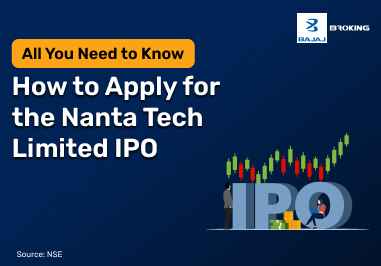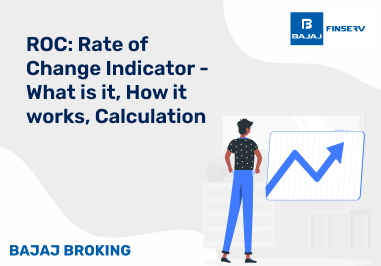In the past, algorithmic trading followed fixed rules, like "if this happens, then do that." Now, AI makes trading smarter. AI can analyse old data and learn what works and what doesn’t. This helps it make better choices next time.
For example, some AI tools learn from news articles or market updates. This is called Natural Language Processing (NLP). Others use trial and error to improve, learning from their mistakes. This is called reinforcement learning.
With algorithmic trading with AI, the system doesn't wait for someone to change the rules. It changes itself based on new data. That makes it faster and more flexible. This means that AI in trading enables traders to react to the market more quickly and in a more informed manner.
Major AI Methods Applied in Financial Market Analysis
AI utilises various methods to analyse and comprehend the market. Here are some of the common ones:
Supervised Learning
This method teaches the computer to use past examples to predict future prices.
Unsupervised Learning
This helps identify patterns in data without instructing the computer on what to look for.
Reinforcement Learning
This method teaches the system to make better choices by learning from its actions.
Natural Language Processing (NLP)
NLP enables AI to read news and financial reports, allowing it to understand market trends.
Deep Learning
Deep learning utilises highly advanced systems to identify patterns in large datasets, such as stock charts.
These methods help algorithmic trading with AI become more accurate, flexible, and useful for making trading decisions.
Benefits of AI-Powered Trading Strategies
Utilising AI in trading provides several advantages that enhance the trading process, making it more accurate, faster, and easier to manage. Here are some of the key benefits:
Faster Processing and Execution
AI can handle large volumes of market data in real-time. This speed enables traders to make quick decisions, allowing them to act on market changes immediately without delay.
Improved Signal Detection
AI algorithms can identify price patterns and signals that may be too subtle for human traders to detect. These signals facilitate more informed entry and exit decisions.
Continuous Learning Capability
AI systems improve themselves over time. They learn from past trading outcomes and refine their models, which helps improve future performance.
Better Portfolio Monitoring
AI tools continuously monitor market movements and portfolio performance. This helps traders stay informed and make timely adjustments when necessary.
Reduced Manual Errors
Since AI automates many aspects of the trading process, it reduces the likelihood of mistakes caused by human emotion or input errors.
These features make algorithmic trading smoother and smarter. AI can manage large tasks without requiring constant supervision, making it beneficial for day-to-day trading.
Limitations of AI-Powered Trading Strategies
While AI in trading has many benefits, it also comes with certain limitations that traders must understand and manage:
Dependence on Data Quality
AI decisions are only as good as the data on which they are trained. Inaccurate or outdated data can lead to incorrect or risky trades.
Lack of Transparency
AI models often function as a "black box," meaning their internal logic may be hard to explain. This can be a problem when users need to understand or justify a decision.
Overfitting Risks
Sometimes AI systems become too focused on historical patterns and fail to adapt when the market behaves differently. This is called overfitting.
Technical Infrastructure Needs
AI trading systems require powerful computers, a fast internet connection, and regular software updates. This can be costly or difficult for smaller users to manage effectively.
Regulatory Compliance
AI systems must adhere to all applicable trading regulations. If not monitored properly, they might break the rules, leading to financial or legal consequences.
So, while algorithmic trading with AI has many benefits, it's also crucial to use it carefully and ensure everything is functioning as intended.
Impact of ML & AI in Trading Strategies
Machine learning (ML) and artificial intelligence (AI) are transforming the way people trade in financial markets. These tools help traders analyse large amounts of data and identify patterns more quickly than humans can. AI in trading analyses past and present data to identify trends. This helps trading systems operate more efficiently and accurately. Algorithmic trading with AI doesn't need people to watch every step, making trades smoother. These smart tools facilitate informed trading decisions based on data rather than guesswork.
Compliance and Ethics in AI-Driven Financial Systems
As AI in trading becomes more prevalent, it's essential to consider fairness, regulations, and responsible use. Below are some key points to consider:
Data Privacy and Use
AI systems must only use data that is allowed by law. This includes making sure the data is collected properly and doesn’t violate privacy rules.
Auditability of AI Models
It should be possible to track how AI systems make decisions. This helps traders and regulators understand what the system did and why it did so.
Bias Mitigation
AI should treat all data fairly. If the system favours certain data unfairly, it may make wrong or unfair decisions.
Regulation Readiness
AI must adhere to the country's financial regulations where it is used. These rules can differ, so the system must be adjusted for each region.
Ethical Deployment
AI must be used responsibly. Traders should ensure that it is not used to mislead, harm the market, or breach ethical standards.
As algorithmic trading with AI becomes more prevalent, ensuring it’s fair, safe, and within the rules is just as important as utilising it effectively.
Conclusion
AI is making a significant impact on algorithmic trading, even in areas such as commodities. It helps identify small price changes and facilitates faster trades. But it must be used carefully. The success of AI in trading depends on having good data, adhering to the rules, and utilising the systems effectively. As things change, AI will likely become a bigger part of how trading works, but people still need to understand it and keep control.














